I prefer time-only clocks above anything else. They are simple to work on and because they are less complex they tend to be more accurate, relatively speaking. Most are easy to service but this little guy has me stumped.
Thousands of these relatively small German movements were made and some found their way into small shelf clocks like the ones I will be talking about in this article.

Let’s not confuse these inexpensive clocks with better known and highly regarded Black Forest clocks of Germany
I acquired a couple of Blackforest shelf clocks about a year ago. Let’s not confuse these inexpensive clocks with better known and highly regarded Black Forest clocks of Germany. The clocks I will be discussing here were made by the Blackforest Clock Co. of Canada in the 1930s. Later on, during the war years (1941) the company felt compelled to change it’s name to the Forestville Clock Company of Canada. They sourced their movements from England during the war years and Germany prior to (and after) World War II. They are German time-only “plate-clock” movements. They are called plate clock movements because they were made to be placed behind decorative plates, commonly called delft porcelain wall clocks designed primarily for the kitchen. Many delft clocks had time-only movements just like the ones in these shelf clocks.

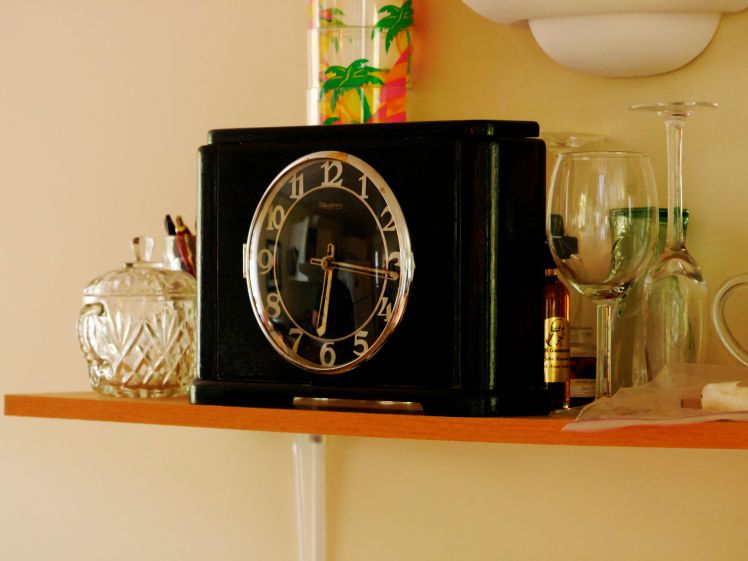
They are easy to find. Antique stores, junk shops, and thrift stores all have them. They are very cheap, usually quite stressed having spent most of their lives in basements, attics and garages and probably the last clock to leave the store shelf. They are always passed over for the “better” clocks. I buy them because they are cheap and relatively easy to bring back to life. The pictures you see here are clock cases that have been significantly refreshed. Here’s a before shot.
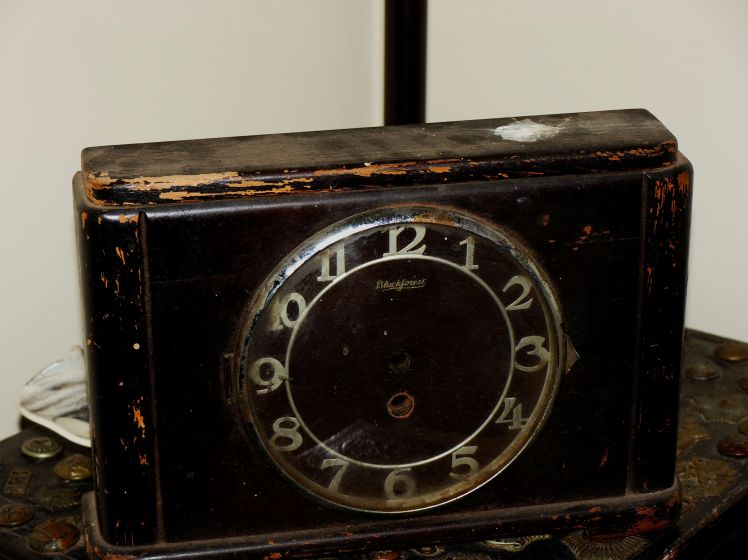
Those who are familiar with time-only movements know they are relatively simple to work on
Since the mainspring in one clock snapped in two places I have combined the best parts of each one in an attempt to have a working movement for the most attractive looking clock which for me is the 1937 commemorative edition King George VI clock. I might just throw in a quartz movement for the other clock unless I find another plate clock movement. For those who are familiar with time-only movements they are relatively simple to work on. You might call them fun and a good challenge for those new to clock repair. The gears are small and the pivots are tiny but they are easy to dissemble and put back together. No helper springs and levers to worry about. Here are some shots of the movement.
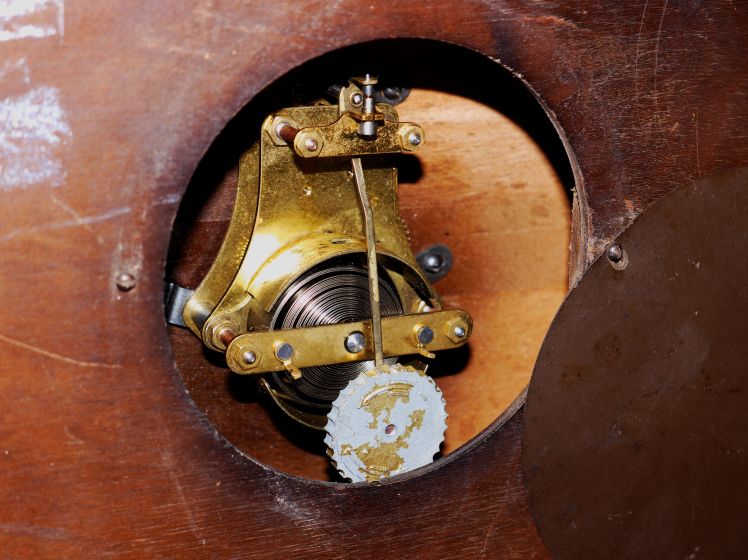
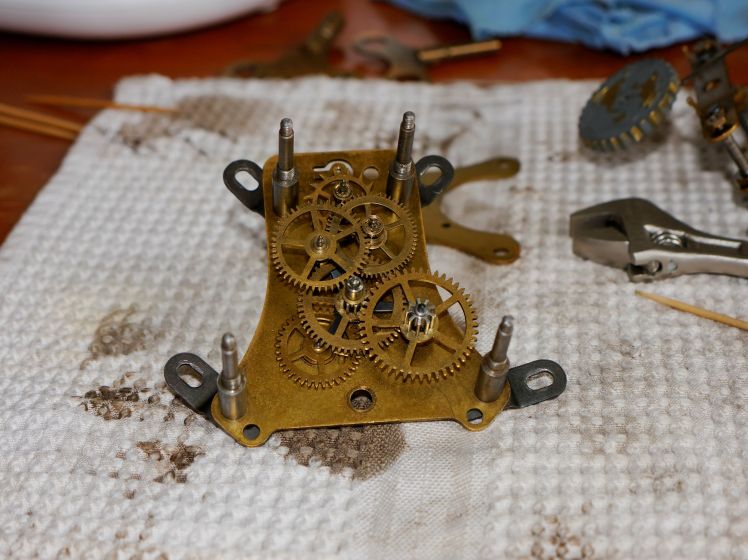
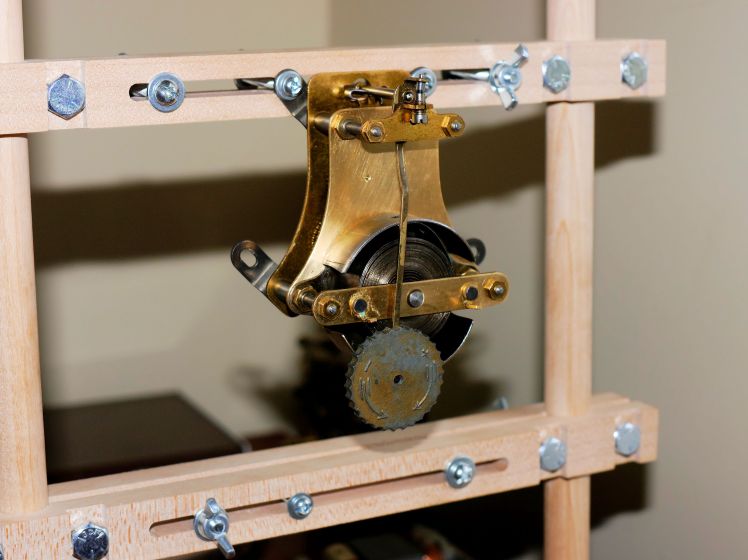


I have been testing the movement with mixed results. I installed one bushing on T3 after which the movement ran better. It is in beat and will run but not for as long as I would like. Why can’t this little guy run a full eight days? The best it can do is 4 days. Perhaps a mainspring issue; too weak to give me a full eight day cycle? A pity because I truly wanted to have this thing running strong and reliably. Being a glutton for punishment I have another plate clock coming in the mail. I am not absolutely sure if it has the same movement but I am willing to bet that it does since it is another Forestville, this time a true delft clock.
These often neglected clocks are great fun to work on. Total outlay for all three clocks – $55. Not bad!

Great post and great work!!!
LikeLike
Thanks for coming to my blog and thanks for the comment.
LikeLiked by 1 person
Hi Ronald. I post a comment (about some clock in particular) on “My Clock Collection”, but it goes into thin air. Perhaps you can check your spam folder. Thanks.
LikeLike
You are correct and I have replied to your question.
LikeLiked by 1 person
Hi,
I have been repairing clocks for about 55 years, first as a teenager under an old watchmaker (who taught me most everything about clocks) in a Jewelry Store, and then as a hobbyist. The only clock that ever beat me was a very nice Atmos clock which I refused to touch since they require special knowledge and tools which I do not have.
That is until now. I have exactly the same plate Black Forest movement as in this article. I have had it running for several hours, then it stops. I have tried everything, except replacing the mainspring, that I can think of with no joy. Have you come up with a solution yet? The movement is so simple that it is driving me crazy not being able to get it going.
I enjoyed reading that I am not alone with this dilemma.
Thanks,
Norm
LikeLike
Thanks for dropping by, Norm. Like you I took it apart several times. It was driving me crazy as well. In the end, I took the mainspring out, inspected it for the usual signs of stress, gave it a thorough cleaning and applied Keystone mainspring oil to eliminate any possibility that the mainspring was sticking. Next I spent a fair amount of tine getting the clock in beat. As you know that little pallet arbor adjustment is so difficult to set, at least I found that to be the case. In any event it is in it’s 4th cycle. Not only does it keep good time but it runs upwards of 9 days on a cycle.
LikeLike